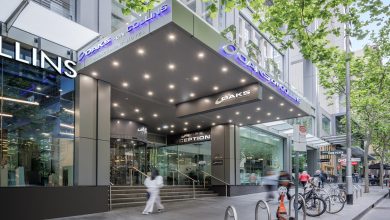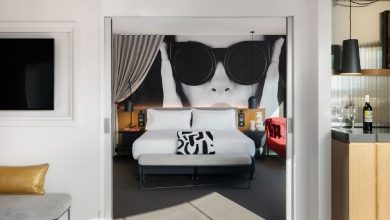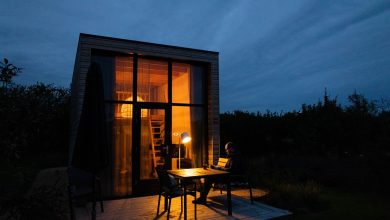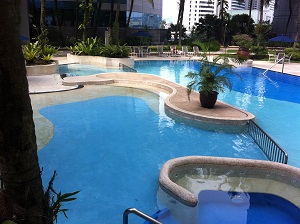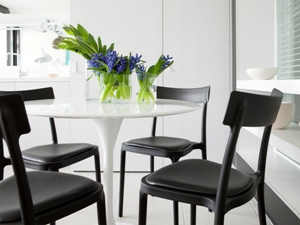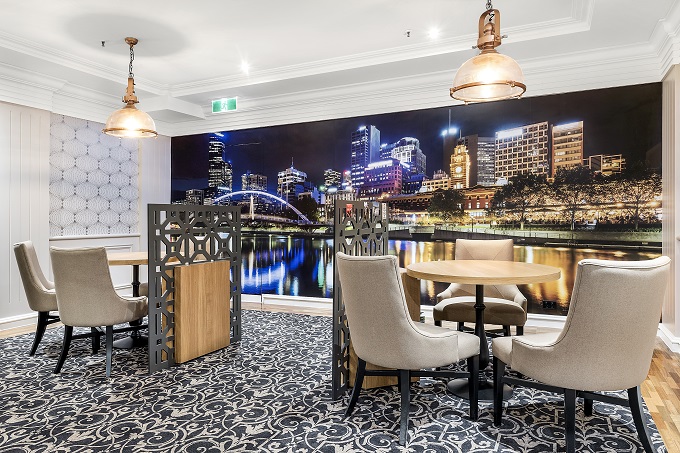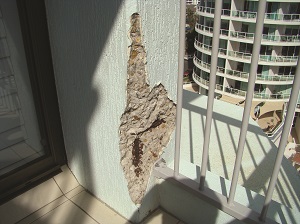
Are you at risk from your balconies?
These days, an army of personal injury lawyers stands by ready to spring into action at the slightest sign of anything that could affect their client’s life or limb; a trip over chipped, cracked or broken concrete, a gash from a rusty railing, or worse… and there is so much worse that can happen.
Every balcony has the potential to fail at any stage of its lifespan, particularly as it ages and the financial repercussions can be crippling.
However, as a hotel, resort or property manager, if you do everything right, you have nothing to fear.
Your guests can enjoy themselves and the views from their balcony without worrying about a thing, except maybe some un-forecast cloud cover.
The secret is to get a building and concrete expert in to inspect your balconies and balustrades thoroughly.
Someone who’ll then issue a comprehensive report that spells out in detail exactly what needs to be done to ensure your balconies are safe and sound.
What can go wrong with a balcony?
Plenty. The most serious issue (one that must be rectified immediately) centres on the structural steel itself and the render around the supporting posts or balustrading.
If there has been prolonged moisture ingress of the balcony surface, particularly around the posts, concrete spalling will inevitably take place and that will lead to deterioration of the substrate.
One problem quite often leads to another. For example, if the balustrade fixing posts are connected to the steel reinforcing in the slab, the subsequent spalling and corrosion could spread, potentially weakening the structural integrity of the entire slab.
There could also be a problem if dissimilar materials react badly to one another.
Overloading by way of large terracotta pots, heavy statues, water features and ornaments can also cause problems. Particularly if the balcony has not been purpose built to support them.
With hotels and resorts constructed by or near the ocean, rust caused by saltwater corrosion can also play havoc with steel reinforcing as well as unprotected steel fixtures and fittings, including fixing plates, nuts, bolts, and screws (and remember, the latter can also loosen over time, thus jeopardising the structural integrity).
In seaside areas, small cracks in concrete may appear harmless, however bear in mind that if water can get in, it will get in.
 10 potential problem signs to look out for
10 potential problem signs to look out for
1. Water pooling on the balcony surface with no runoff
2. Leaning balconies
3. Chunks of concrete fallen off (or in the process of falling off)
4. Worn, corroded or unstable balustrades and handrails
5. Wall cladding flush up against the balcony
6. Rust stains underneath a balcony
7. Handrails fixed through the top surface of the balcony
8. Exposed steel reinforcing
9. Where the building meets the balcony or balustrading
10. The tops of balustrades/fixing at wall junctions
Extend the life of a balcony by providing:
– Regular ‘falls’ across the surface to allow runoff
– Appropriate flashing and drainage (with drains cleaned regularly)
– Overflows to supplement drainage in case of heavy rain, blockages, etc.
– Correct handrail fixings
– A durable surface membrane
– At least 100mm difference between the balcony surface and building interior
– At least 35mm clearance between balcony and the base of wall claddings
If these procedures are adhered to and the concrete balcony is regularly inspected and well-maintained, there is nothing to stop the balcony lasting somewhere between 40 and 50 years.
What a balcony/balustrade company will do
There are many balcony/balustrade companies that can undertake the operational work to fix these issues.
Alternatively, you can engage a higher-level building rectification company that runs the project from a technical and managerial point of view. They will oversee the inspection and reporting process, as well as the repair or replacement of the old system.
The report should include an expert assessment of the state of the structural concrete, particularly around the supporting post fixing points.
The actual repair may also involve installing a range of different balustrading materials such as powder-coated aluminium, glass infill panels, galvanised and stainless steel rails.
Finally, it should include all the relevant structural and cosmetic repairs such as painting, rendering, etc.
Hopefully this article will give you a fresh view on balconies.
accomnews would like to acknowledge the invaluable assistance given by Scott Jensen, director of Roof & Building Service (R&BS) in compiling data for this article. For more information, contact Scott on 1300 311 032 or visit www.roofandbuildingservice.com.au

AccomNews is not affiliated with any government agency, body or political party. We are an independently owned, family-operated magazine.

